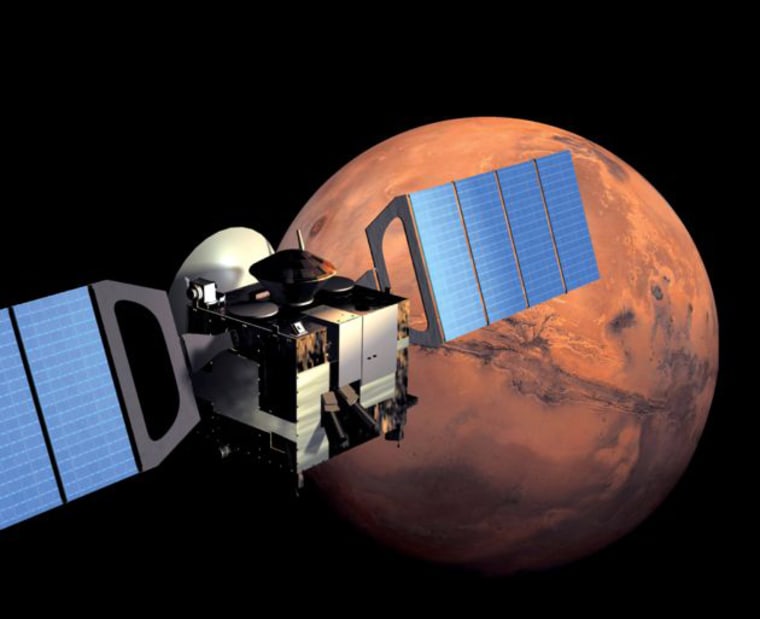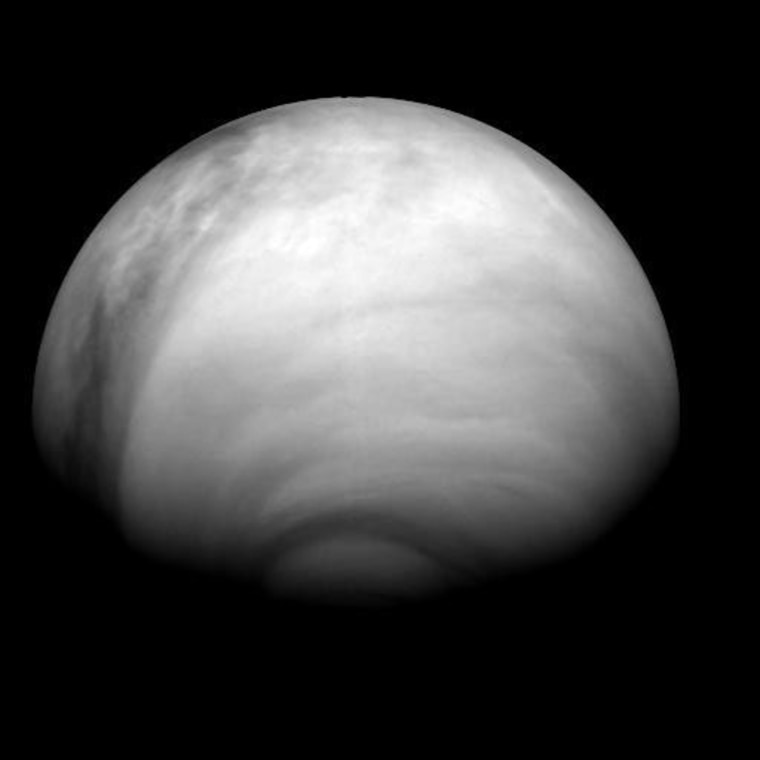Mars and Venus, those seemingly contrasting planets of self-help book fame, have more in common than you might think. Two nearly identical spacecraft around Mars and Venus have compared the two worlds' atmospheres and found them to be surprisingly similar.
The ESA's Mars Express and Venus Express are currently in orbit around the planets taking measurements of their atmospheres as they interact with solar radiation. The data show that charged particles from the gas layers around both planets are being scavenged by solar wind and storms.
"Mars and Venus are very different planets," said David Brain, a planetary scientist at the University of California, Berkeley, and a supporting investigator for Venus Express. "Venus's atmosphere is very thick, dry and hot, and Mars' atmosphere is very thin and cold. And yet the same processes are happening on both planets."
Both Venus' and Mars' atmospheres are about 95 percent carbon dioxide. Earth's is mostly nitrogen now, but scientists think it used to be more like the other rocky worlds.
Because neither of our neighboring planets has a global, protecive magnetic field, the solar wind is free to interact directly with the planets' atmospheres. Solar radiation energizes atmospheric particles so that they accelerate and escape from the planets. Earth is spared from the brunt of solar radiation by its protective magnetosphere.
"These results really highlight what a special place Earth is and how lucky we are to have an atmosphere protected by a magnetic field," Brain said.

By analyzing the spacecrafts' treasure trove of data, researchers hope to learn how these two planets' climates have changed over time and to compare their evolution to Earth's atmosphere.
"We want to understand why Earth is different from Mars, why is it different from Venus, why are the inner planets different from the outer planets," Brain told SPACE.com. "As a scientist it's amazing to have the same set of measurements at both planets simultaneously. A great example is the solar storm. We got to see the same event measured at two different places."
In December 2006, a powerful solar storm erupted, spraying jets of charged particles outward. Venus and Mars were smacked with radiation, causing particles in their atmospheres to gain energy and escape — Mars lost atmospheric particles 10 times faster than it usually does.
"I like to think of the solar storms as tsunamis in the atmospheres of the planets," Brain said. "It was very intense and saturated many of our instruments. It was a lucky encounter, maybe not for the atmospheres, but for us who were watching."
